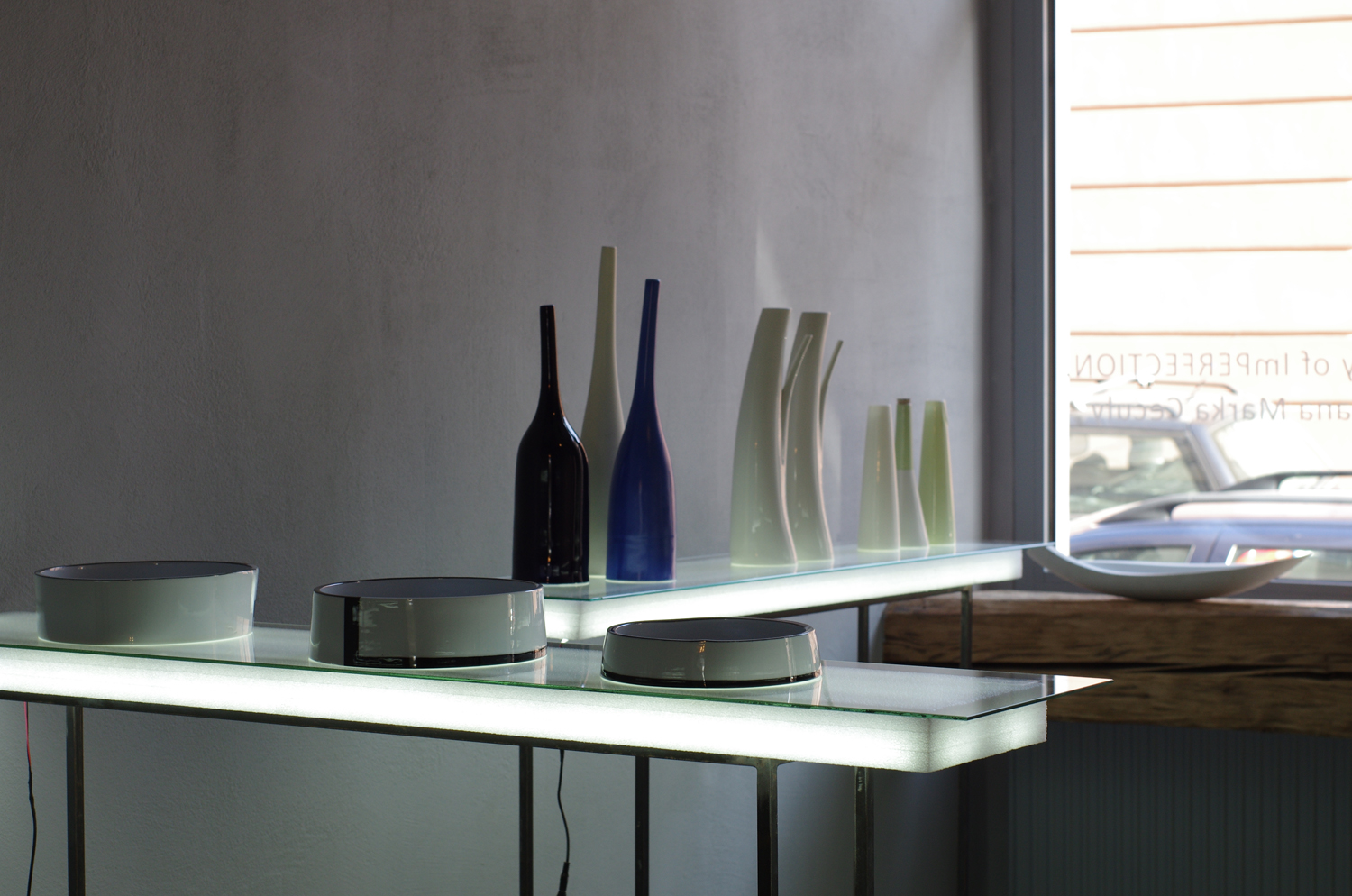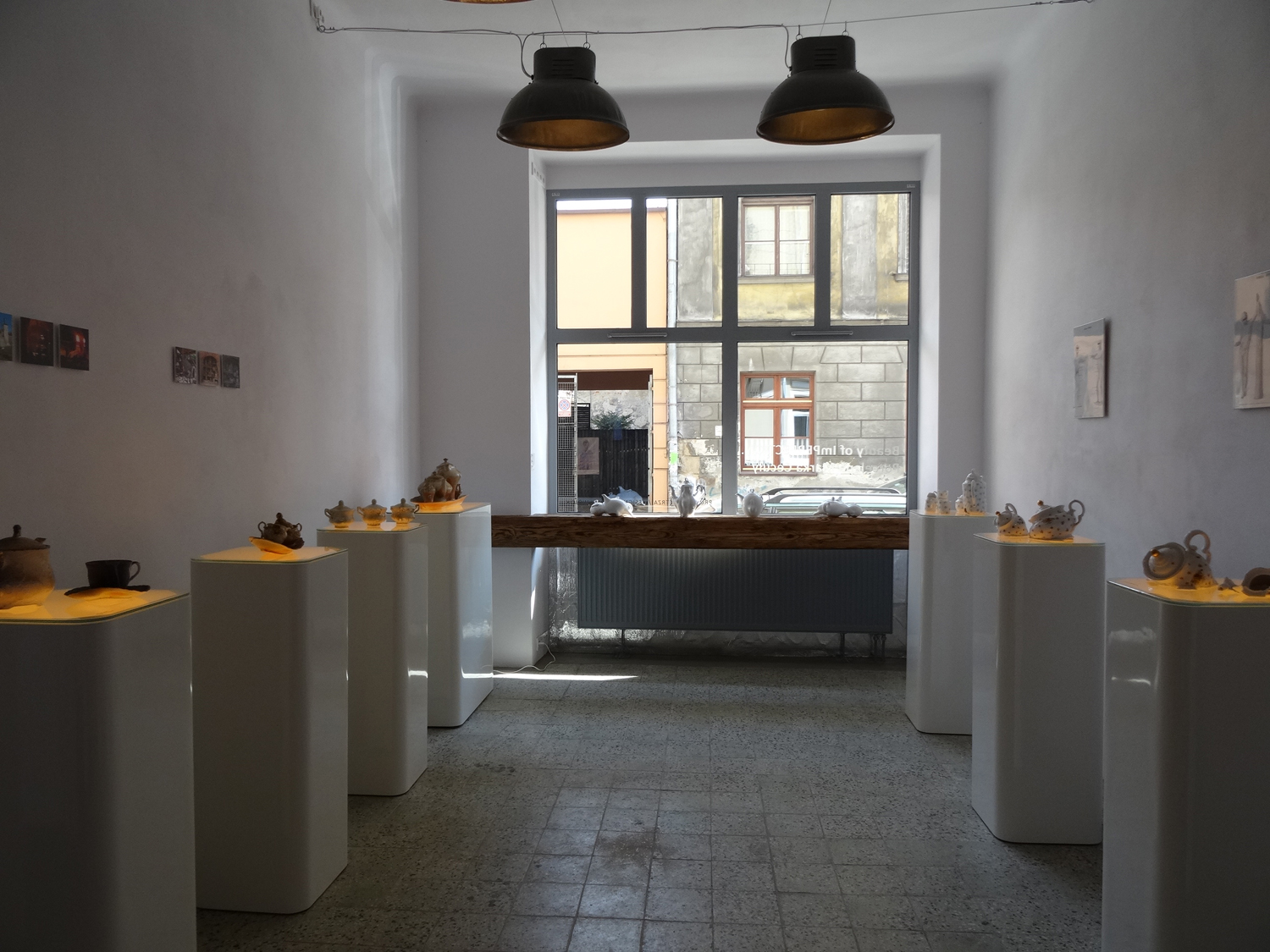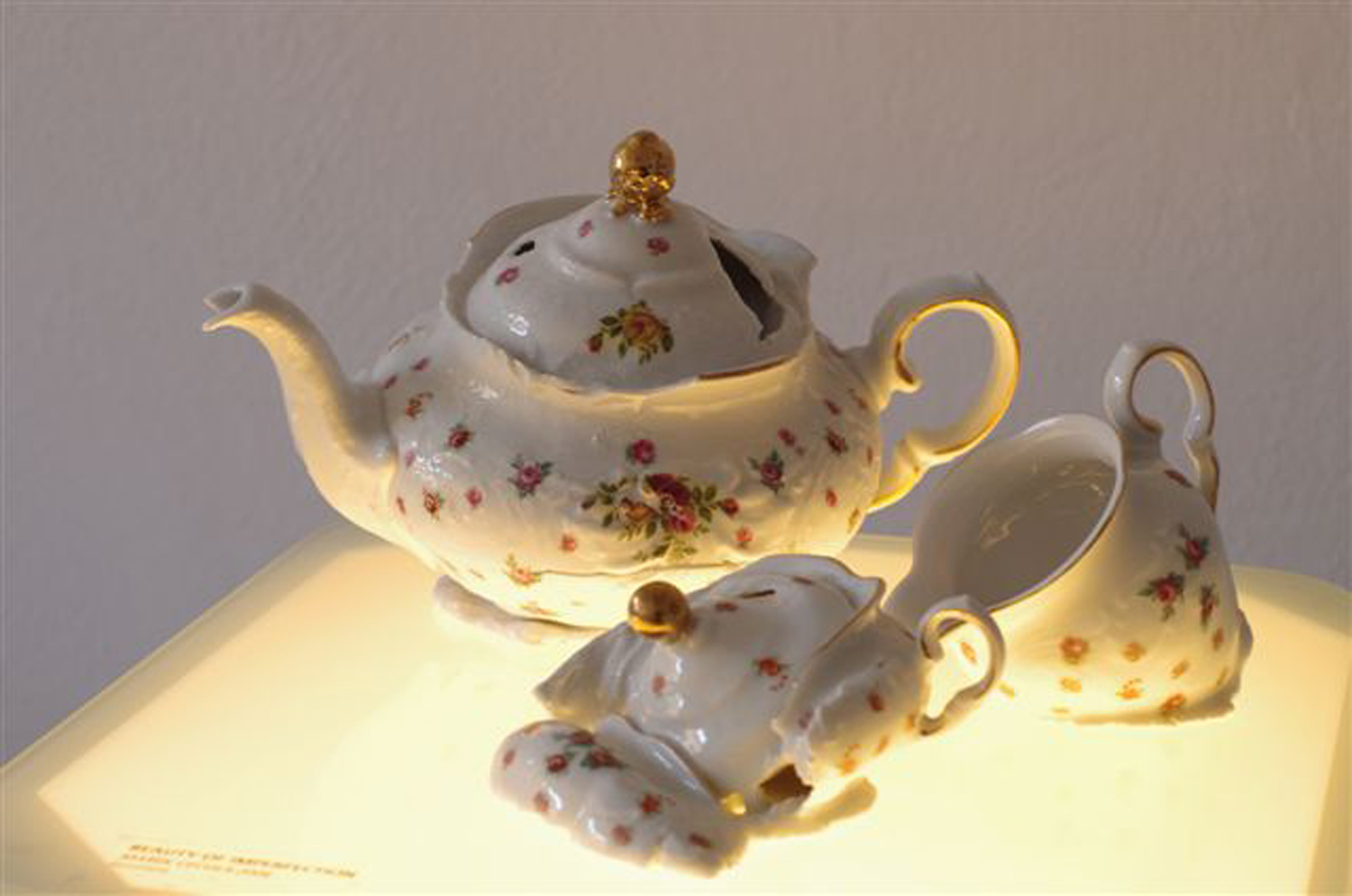Beauty of ImPERFECTION. Marek Cecuła

Beauty of ImPERFECTION. Marek Cecuła
ul. Skałeczna 5, Kraków –10.04.2015 – 9.06.2015
exhibition project by Marek Cecuła in collaboration with Anita Bialic and Tomek Wójcik
Beauty of ImPERFECTION. Marek Cecuła
ul. Skałeczna 5, Kraków –10.04.2015 – 9.06.2015 – opening of the exhibition: 9.04.2015, 6pm
exhibition project by Marek Cecuła in collaboration with Anita Bialic and Tomek Wójcik
The exhibition will present works and projects from the New York period, projects for the Ćmielów Design Studio and Modus Design, and works on the border between art and design from the series "Beauty of Imperfection".
Preparing this retrospective exhibition of works by Marek Cecuła, artist and designer, and curator of significant artistic projects, is a major challenge. How can we talk about more than 40 years of design work? What are the selection criteria that we should apply to the works?
“I am absolutely an artist!” emphasised Marek Cecuła in a conversation that I conducted with him while developing the concept for the exhibition. This "absolutely an artist" determined the nature of its presentation...
The perfect artist! The vast imagination which enables him to shape porcelain easily and carefreely. And simultaneously the meticulous attention to detail; the almost total control of the space in which he operates and to which it applies.
Beauty of ImPERFECTION. The Porcelain of Marek Cecuła.
Welcome to the exhibition.
Anita Bialic
'I am a watcher, an anthropologist, who is constantly discovering how we form relationships with objects and their functions.' Marek Cecuła
Marek Cecuła – a world-renowned ceramic artist, designer, educator and curator.
Born in Częstochowa, 1944. In 1960 moved to Israel, where he lived for 12 years. After 4 years in Brazil, 1972-1976, he moved to New York, where he founded the Modus Design Studio (transferred to Poland in 2001) and the Contemporary Porcelain Gallery. Since 2000 he has been living and working in Poland.
Head and coordinator of the Ceramic Department, the Parsons School of Design in New York, USA, 1983-2004. Visiting professor at the National College of Art and Design in Bergen, Norway, 2003-2010, and at the Royal College of Art in London, the Great Britain, 2010.
Founder and creative director of the Design Centrum Kielce (currently: the Institute of Design Kielce), 2010-2012. Since 2012 the creative director of the Ćmielów Design Studio, operating in the Polskie Fabryki Porcelany “Ćmielów” and “Chodzież” SA.
Curator of The Third Biennale for Israeli Ceramics, 2004, and several exhibitions, including: “Art of Industrial Ceramics”, the Gardiner Museum, Toronto, Canada 2008; “Object Factory: The Art of Industrial Ceramics”, the Museum of Arts and Design, New York, USA, 2009; “non object-ive”, Łódź Design Festival, 2009; “Table Talk”, Łódź Design Festival 2010.
Has participated in about 60 individual and over 100 group exhibitions in the USA, Israel, Brazil, Canada, Germany, the Netherlands, Norway, Korea, and Poland.
His works are part of many museum collections, including: the Victoria and Albert Museum, London, the Great Britain; the Smithsonian American Art Museum, Washington, USA; the Museum of Fine Arts, Boston, USA; the Museum of Fine Arts, Houston, USA; the Museum of Arts and Design, New York, USA; the KODE Art Museums, Bergen, Norway; Le Musée Royal de Mariemont, Morlanwelz, Belgium; the National Museum in Warsaw and in Wrocław, Poland.
Award-winning artist with numerous prestigious prizes, including: the main prize the “Exellence Award” in the category “Product design” for the “Ceremonial Set I & II” on the International Design Fair “Accent on Design”, New York, 1987; the “Award of Excellence” and the scholarship in the Kohler Art Centre for participating in a group exhibition in Wichita, USA, 1990; the New York Foundation for the Arts scholarship, New York, 1991, 1995; the prestigious scholarship in the category Arts & Craft to the amount of 50.000 $ granted by the Luis Comfort Tiffany Foundation, New York, 1999.
/…/Cecula is someone I have followed for a long time. He was one of the artists in my 1992 "More Than One" exhibition of production craft, itself a portmanteau concept, at the American Craft Museum. As a collector of modernist dinnerware as well as a critic, I still love his Colorware, a mix-and-match set of black-rimmed solid colors: chartreuse, saturated blue, off-red, and bright yellow. Pop, post-pop, Bauhaus and Wright are some bases touched. Much later, I wrote for American Ceramics about his brilliant Scatology Series sculptures that cover gynecology, AIDS, and the medical side of sanitary porcelain. Last year his one-man show at Garth Clark was a further exploration of the body.
Like most artists working in New York, Cecula comes from elsewhere, but in his case it is really elsewhere. He was born in Poland, was a kibbutznik in Israel (which is where he learned ceramics), and then worked in a ceramics factory south of Sao Paulo before he ended up in Soho—in the early days. Cecula is nostalgic about the once palpable artistic climate: anything could happen. And it did. After Poland, Israel and Brazil, New York was the only place he wanted to be.
One of the important things about Cecula is that he works in three worlds: design, craft and sculpture. Design is still the hand that feeds him, but it is not as if the two worlds are in isolation. As in the larger world, one discipline influences the other. His recent trope of using "found" ceramics and recontextualizing them is an art world strategy. "The Porcelain Carpet Project," is an even more startling interchange or exchange or synthesis/…/John Perreault www.ceramicstoday.com/articles/marek_cecula.htm
Marek Cecula is an ever evolving, conspiring, ceramic conceptualist. His knowledge of ceramic art, craft and design history including traditions (craft forms) empowers him to create artefacts that sit transgressively in between ceramic disciplines. He embraces the ceramic discourse and translates mundane ceramic products into cutting edge artefacts of mainstream cultural significance, the gestalt of which elevates this ceramist far beyond that of any of his ceramic peers.
His ceramic statements are metaphors for ceramic change and even challenges consumer values. But more importantly these products are imbued with significance that challenges our notion of the role of the artefact within an ever changing globalised society. He does so at a time when the very fundamentals of studio ceramics and craft traditions are being questioned, challenged and metaphorically speaking, sadly buried /…/ http://eugenehon.blogspot.com/2009/10/marec-cecula-s-transgressive-in-du...























